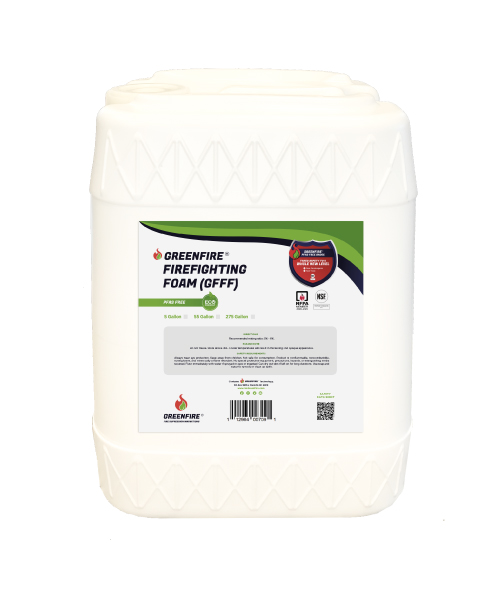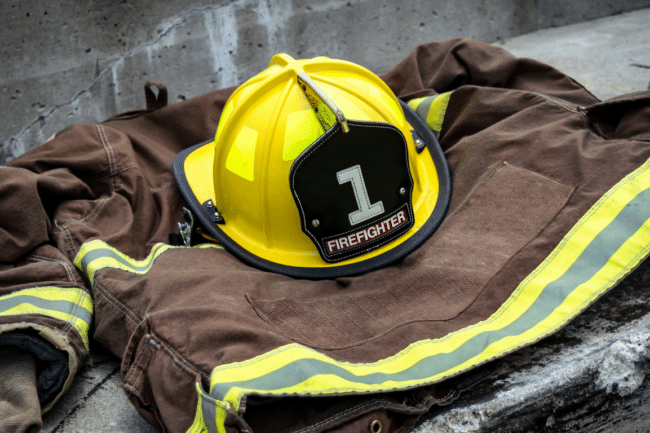We rely on firefighters to protect us in the face of danger. They are our heroes, equipped with the tools they need to fight fires and save lives. One of these tools is firefighting foam, which has long been considered a reliable and effective solution. However, we now know of the dangerous chemicals found in some firefighting foam: PFAS, or per- and polyfluoroalkyl substances, also known as Legacy Foams.
Per- and polyfluoroalkyl substances (PFAS) are a family of man-made chemicals that contain carbon, fluorine, and other elements. Two of those chemicals are found in firefighting foams, Perfluorooctanoic Acid (PFOA) and Perfluorooctane Sulfonate (PFOS). They are the most widely used and studied chemicals within the Legacy Foams.
Firefighting foam containing these legacy chemicals has been used for decades, but evidence suggests that it poses serious threats to both our environment and our health. Because of the lack of awareness regarding the danger of these legacy foams, many people unknowingly expose themselves to them through contaminated water or food, further exacerbating the issue. As concerns about PFAS continue to grow, it is crucial that we take action to protect ourselves and the planet.
Environmental impact of PFAS firefighting foam
Forever chemicals found in firefighting foams have a profound and alarming impact on the environment. These chemicals often run off into the soil and nearby bodies of water. They can also contaminate groundwater that subsequently affects millions of people. These chemicals can persist for decades, creating long-term pollution problems.
Health risks associated with PFAS exposure
Research has linked the harmful chemicals in these substances to a variety of adverse health effects, including increased risks of certain cancers. Epidemiological studies have provided compelling evidence indicating that individuals with higher levels of PFAS in their blood are more likely to develop these types of cancers.
Exposure to Legacy Foams has also been associated with immune system dysfunction. They may also exacerbate existing health conditions. Additionally, the potential for developmental issues in children remains a significant concern.
The cumulative nature of forever chemicals in the body is another alarming aspect of their health risks. Our bodies cannot metabolize and eliminate PFAs chemicals; rather they remain in the bloodstream for years. Even low levels of exposure can accumulate over time, leading to increased health risks.
Alternatives to PFAS firefighting foam
Because these legacy chemicals are so dangerous, much is being done to find effective alternatives. Several non-fluorinated foams have been developed that can effectively suppress flammable liquids without the harmful environmental and health effects associated with PFAS. These alternatives often utilize different chemical compositions, such as proteins or synthetic surfactants, to achieve similar firefighting capabilities without the risk of persistent contamination.
GreenFire® FireFighting Foam (GFFF) is designed as a highly effective PFAS-free foam replacement for AFFF. It can be used in the same firefighting applications as AFFF foam. This foam is a practically non-toxic, Food Area Safe (NSF), PFAS-free alternative. GFFF is an effective Class B foam that can be used in:
- Fire Engines
- Foam Tenders
- Compressed Air Foam Systems (CAFS)
- Fire Sprinklers (with manufacturer approval)
By using this fluorine-free firefighting foam, firefighters can safeguard their health and the environment. It is currently being used and trusted by many fire departments. GFFF has been subjected to government testing (DOD, DOE, EPA, FAA) with successful outcomes.

Moving towards a PFAS-free future
The dangers of PFAS firefighting foam have highlighted the urgent need for action to protect both our health and the environment. As we gain a deeper understanding of the risks associated with these persistent chemicals, it becomes clear that transitioning away from firefighting gear containing these legacy foams is essential.
The shift to food and environmentally safe alternatives and improved firefighting protocols can significantly reduce the risks associated with PFAS, safeguarding future generations from the adverse effects of these hazardous substances.
Follow us on social media for PFAS Firefighting Foams or updates about GreenFire® PFAS-free Products:
If you would like more information about our GreenFire® Products, reach out to us at [email protected].

